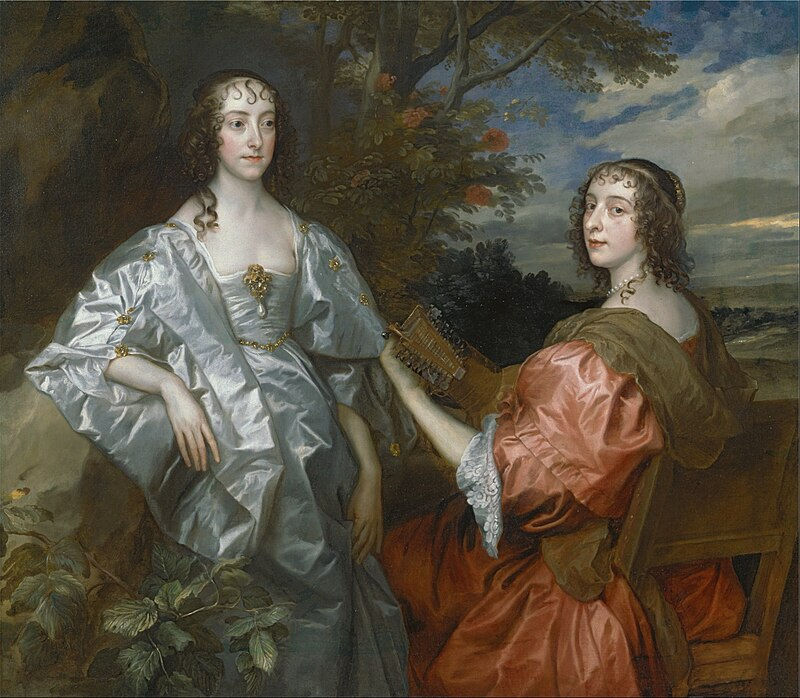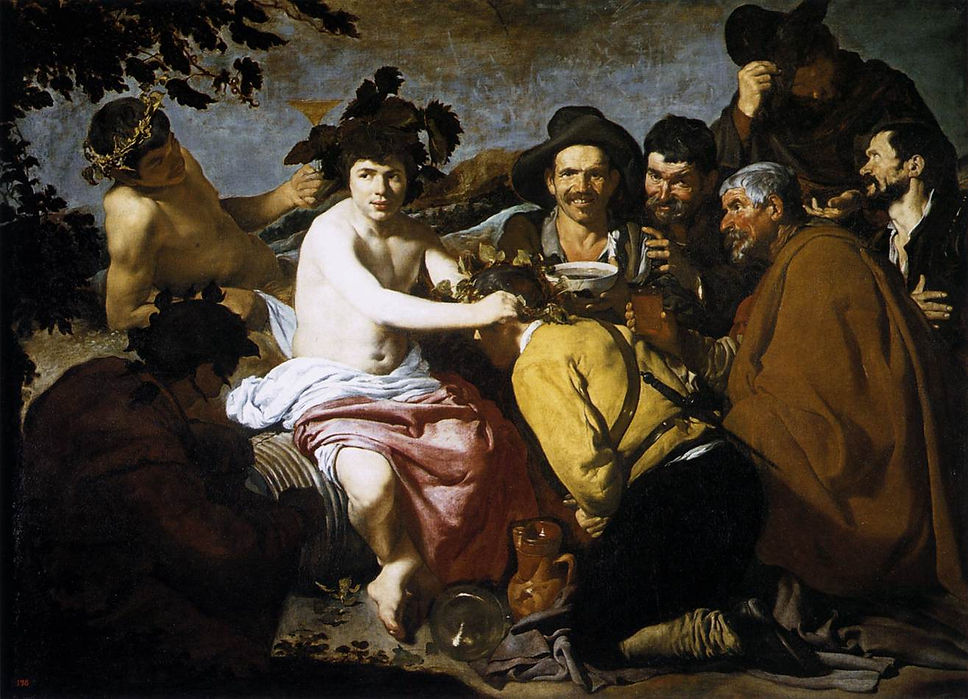
Baroque - IV
Nicolas Poussin
1594 – 1665
Nicolas Poussin (June 1594 – 19 November 1665) was a French painter who was a leading painter of the classical French Baroque style, although he spent most of his working life in Rome. Most of his works were on religious and mythological subjects painted for a small group of Italian and French collectors. He returned to Paris for a brief period to serve as First Painter to the King under Louis XIII and Cardinal Richelieu, but soon returned to Rome and resumed his more traditional themes. In his later years he gave growing prominence to the landscape in his paintings. His work is characterized by clarity, logic, and order, and favors line over color. Until the 20th century he remained a major inspiration for such classically-oriented artists as Jacques-Louis David, Jean-Auguste-Dominique Ingres and Paul Cézanne.
Details of Poussin's artistic training are somewhat obscure. Around 1612 he traveled to Paris, where he studied under minor masters and completed his earliest surviving works. His enthusiasm for the Italian works he saw in the royal collections in Paris motivated him to travel to Rome in 1624, where he studied the works of Renaissance and Baroque painters—especially Raphael, who had a powerful influence on his style. He befriended a number of artists who shared his classicizing tendencies, and met important patrons, such as Cardinal Francesco Barberini and the antiquarian Cassiano dal Pozzo. The commissions Poussin received for modestly scaled paintings of religious, mythological, and historical subjects allowed him to develop his individual style in works such as The Death of Germanicus, The Massacre of the Innocents, and the first of his two series of the Seven Sacraments.
He was persuaded to return to France in 1640 to be First Painter to the King but, dissatisfied with the overwhelming workload and the court intrigues, returned permanently to Rome after a little more than a year. Among the important works from his later years are Orion Blinded Searching for the Sun, Landscape with Hercules and Cacus, and The Seasons.

Self-portrait by Poussin
1650

Venus and Adonis
c. 1628–1629

The Inspiration of the Poet
1629–30

Landscape with Orpheus and Eurydice
1650–51

Massacre of the Innocents
1625–1629

he Empire of Flora
1631

Et in Arcadia ego (The Shepherds of Arcadia)
late 1630s

A Dance to the Music of Time
1640

The Triumph of David
c. 1630

Cephalus and Aurora
1627

Acis and Galatea
1629

Sleeping Venus with Cupid1630

Mars and Venus
c. 1630

Venus, a Faun and Putti
1630s

The Adoration of the Golden Calf
1633–1634

Diana and Endymion
1630s

The Birth of Venus
1635

Rinaldo and Armida
c. 1625

Bacchic Scene
c. 1627

Midas and Bacchus
1629-30

Bacchanal before a Statue of Pan
1631-33
Francisco de Zurbaran
1598 – 1664
Francisco de Zurbarán (7 November 1598 – 27 August 1664) was a Spanish painter. He is known primarily for his religious paintings depicting monks, nuns, and martyrs, and for his still-lifes. Zurbarán gained the nickname "Spanish Caravaggio", owing to the forceful use of chiaroscuro in which he excelled.
Zurbarán was born in 1598 in Fuente de Cantos, Extremadura; he was baptized on 7 November of that year. His parents were Luis de Zurbarán, a haberdasher, and his wife, Isabel Márquez. In childhood he set about imitating objects with charcoal. In 1614 his father sent him to Seville to apprentice for three years with Pedro Díaz de Villanueva, an artist of whom very little is known.
Zurbarán's first marriage, in 1617, was to María Paet who was nine years older. María died in 1624 after the birth of their third child. In 1625 he married again to wealthy widow Beatriz de Morales. On 17 January 1626, Zurbarán signed a contract with the prior of the Dominican monastery San Pablo el Real in Seville, agreeing to produce 21 paintings within eight months. Fourteen of the paintings depicted the life of Saint Dominic; the others represented Saint Bonaventura, Saint Thomas Aquinas, and the four Doctors of the Church. This commission established Zurbarán as a painter. On 29 August 1628, Zurbarán was commissioned by the Mercedarians of Seville to produce 22 paintings for the cloister in their monastery. In 1629, the Elders of Seville invited Zurbarán to relocate permanently to the city, as his paintings had gained such high reputation that he would increase the reputation of Seville. He accepted the invitation and moved to Seville with his wife Beatriz de Morales, the three children from his first marriage, a relative called Isabel de Zurbarán and eight servants. In May 1639 his second wife, Beatriz de Morales, died.
Towards 1630 he was appointed painter to Philip IV, and there is a story that on one occasion the sovereign laid his hand on the artist's shoulder, saying "Painter to the king, king of painters". After 1640 his austere, harsh, hard-edged style was unfavorably compared to the sentimental religiosity of Murillo and Zurbarán's reputation declined. Beginning by the late 1630s, Zurbarán's workshop produced many paintings for export to South America. Jacob and his twelve sons, a series depicting the patriarch Jacob and his 12 sons, seems to have been aimed at the South America market, but the originals were acquired for Auckland Castle in Bishop Auckland, Co. Durham, England.
On 7 February 1644, Zurbarán married a third time with another wealthy widow, Leonor de Torder. It was only in 1658, late in Zurbarán's life, that he moved to Madrid in search of work and renewed his contact with Velázquez.

Self-portrait

Still Life with Lemons, Oranges and a Rose
1633

The Flight into Egypt
late 1630s

Santo Domingo en Soriano
1626

Saint Serapion
1628

The Young Virgin
1630

Saint Casilda of Toledo
1630-1635

Saint Margaret as a shepherdess
1631

Hercules and the Hydra
1634

Saint Elizabeth of Portugal
c. 1635

The Annunciation
1637–1639

Saint Rufina
c. 1635–1640

The Holy Family
1659

Still Life with Pots
c. 1650

St Hugh in the Carthusian Refectory
c. 1655

Saint Francis
c. 1658–1664

The Virgin Mary as a Child Praying
c. 1658–1664
Anthony van Dyck
1599 – 1641
Sir Anthony van Dyck (22 March 1599 – 9 December 1641) was a Flemish Baroque artist who became the leading court painter in England after success in the Spanish Netherlands and Italy.
The seventh child of Frans van Dyck, a wealthy silk merchant in Antwerp, Anthony painted from an early age. He was successful as an independent painter in his late teens and became a master in the Antwerp Guild on 18 October 1617. By this time, he was working in the studio of the leading northern painter of the day, Peter Paul Rubens, who became a major influence on his work.
Van Dyck worked in London for some months in 1621, then returned to Flanders for a brief time, before travelling to Italy, where he stayed until 1627, mostly in Genoa. In the late 1620s he completed his greatly admired Iconography series of portrait etchings of mainly other artists and other famous contemporaries. He spent five years in Flanders after his return from Italy, and from 1630 was court painter for the Archduchess Isabella, Habsburg Governor of Flanders. At the request of Charles I of England he returned in 1632 to London as the main court painter.
With the exception of Holbein, van Dyck and his contemporary Diego Velázquez were the first painters of pre-eminent talent to work mainly as court portraitists, revolutionising the genre. Van Dyck is best known for his portraits of the aristocracy, most notably Charles I, and his family and associates. He was the dominant influence on English portrait-painting for over 150 years. He also painted mythological, allegorical and biblical subjects, including altarpieces, displayed outstanding facility as a draughtsman, and was an important innovator in watercolour and etching.
His influence extends into the modern period. The Van Dyke beard is named after him. During his lifetime, Charles I granted him a knighthood, and he was buried in St Paul's Cathedral, an indication of his standing at the time of his death.

Self-portrait with a Sunflower

Lord John Stuart and his Brother, Lord Bernard Stuart
c. 1638

Charles I and Henrietta Maria with their two eldest children, Prince Charles and Princess Mary April-August
1632

Portrait of van Dyck's wife Mary Ruthven
c. 1637

Samson and Delilah
c. 1630

The Cheeke Sisters
1640

Charles I in Three Positions
1635–36

Crowning with Thorns
1618-20

Cupid and Psyche
1639-40

The Four Ages of Man
1625-27

Jupiter and Antiope
c. 1620

Samson and Delilah
1618-20

Susanna and the Elders
1621-22

Venus Asks Vulcan to Cast Arms for her Son Aeneas
1630-32

Queen Henrietta Maria (detail)
1638

Diana Cecil, Countess of Oxford
1638

Sir George Villiers and Lady Katherine Manners as Adonis and Venus
c. 1620

Katherine, Countess of Chesterfield, and Lucy, Countess of Huntingdon
c. 1636–40

Elena Grimaldi, Genoa
1623
Diego Velázquez
1599 – 1660
Diego Rodríguez de Silva y Velázquez, Knight of the Order of Santiago (baptized 6 June 1599 – 6 August 1660) was a Spanish painter, the leading artist in the court of King Philip IV of Spain and Portugal, and of the Spanish Golden Age.
He was an individualistic artist of the Baroque period (c. 1600–1750). He began to paint in a precise tenebrist style, later developing a freer manner characterized by bold brushwork. In addition to numerous renditions of scenes of historical and cultural significance, he painted scores of portraits of the Spanish royal family and commoners, culminating in his masterpiece Las Meninas (1656).
Velázquez's paintings became a model for 19th-century realist and impressionist painters. In the 20th century, artists such as Pablo Picasso, Salvador Dalí, and Francis Bacon paid tribute to Velázquez by re-interpreting some of his most iconic images.
Most of his work entered the Spanish royal collection, and by far the best collection is in the Museo del Prado in Madrid, though some portraits were sent abroad as diplomatic gifts, especially to the Austrian Habsburgs.

Self-portrait
c. 1640

Breakfast
c. 1618

Old Woman Frying Eggs
1618

Christ in the House of Mary and Martha
c. 1620

The Waterseller of Seville
1623

Philip IV in Armour
c. 1628

The Triumph of Bacchus (Los Borrachos, The Topers)
c. 1629

Infanta Doña María, Queen of Hungary
1630

Prince Baltasar Carlos as a Hunter
1635-36

The Surrender of Breda (Las Lanzas)
1634-35

Las Meninas or The Family of Philip IV
1656-57

Las Meninas (detail)
1656-57

The Fable of Arachne (Las Hilanderas)
c. 1657

The Dwarf Don Juan Calabazas, called Calabacillas
1637-39

Lady with a Fan
c. 1640

The Dwarf Sebastian de Morra
c. 1645

Portrait of Innocent X
c. 1650

Venus at her Mirror (The Rokeby Venus)
1649-51

Infanta María Teresa
1651-52

María Teresa
1652-53

Philip IV
c. 1655
